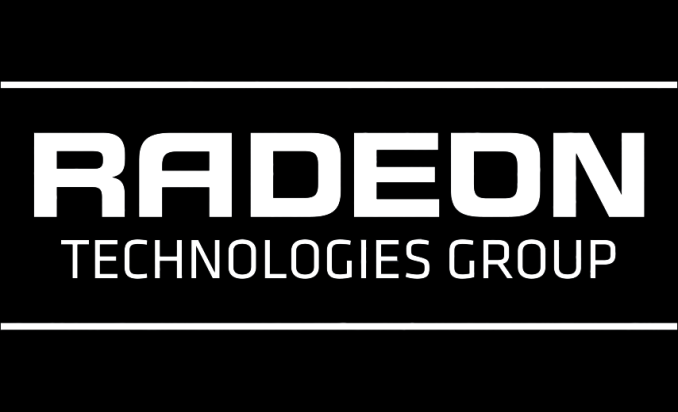AMD To Showcase Latest Innovations at “Capsaicin” Press Event & Webcast
by Daniel Williams on March 8, 2016 8:00 AM EST
Capsaicin, whether you call it the essence of flavor or the distillation of pain (ed: it's the latter), at its core capsaicin is what drives everything we call spicy. Using this as their inspiration AMD's Radeon Technologies Group will be holding a press event for GDC, and they are naming said event after this terrifically terrifying substance.
The press event, which we will be present for, will also be getting a live webcast that will be available on AMD’s investor relations page next week on Monday March 14th, at 4:00 PM PT. After concluding the event a replay will be available to watch a few hours later, along with YouTube access as well.
At the event RTG plans on showcasing their own hardware, software, and gaming partners. As Capsaicin is the reason for that fire that inspires dishes worldwide, RTG will explore what they call the “inner essence” of the GPU and how it powers innovations that we will see in gaming and VR. Along these lines RTG plans to show the latest advancements drive both the enthusiast and developer communities as we approach a growing virtual reality market.
Meanwhile, that AMD is broadcasting a webcast should be considered significant. Due to Security and Exchange Commission rules, AMD is required to reveal certain types of information to investors at the same time as the press. In previous instances where AMD has announced a webcast via their investor relations site, there have been new product announcements. So it is reasonable to expect the same here.
For more information, please see the Capsaicin webcast announcement page.
Source: AMD










47 Comments
View All Comments
chris200x9 - Tuesday, March 8, 2016 - link
Even with flagships launching in 2017 you'll get maybe a year at most longevity out of a $1000+ GPU? Also if we look at benchmarks and assume a 30% increase with polaris a new 390 like GPU will beat Fiji. The only way Fiji x2 is competitive is if AMD gimps the Polaris roll out, which would be extremely stupid. Fiji x2 is DOA.zoxo - Tuesday, March 8, 2016 - link
Fiji X2 is for VR and D12, not for "regular" gaming, and I think it would work relatively well there. 1 eye per GPU is such a natural fit, that it is probably a lot more useful and lot less problematic as AFR crossfire/SLI.From the "middle" Polaris chip (the bigger of the 2), I'm expecting a 390/390X level of performance, within a much lower power envelope. Nothing will challenge the big boys from either camp this year.
CiccioB - Wednesday, March 9, 2016 - link
If the "middle" Polaris has the same size than Hawaii, it will pack double the transistor and will consume less. I wonder how can you say that such a GPU could perform as Hawaii.It is logical to think it will perform much near Fiji. And probably even better (seen how bad Fiji scaled with such many shaders which is a think they have probabily fixed with the new architecture). If not, it means that the new architecture will be a completely fail.
Or the "middle" Polaris won't be that big.
Kevin G - Tuesday, March 8, 2016 - link
Fury was big but it wasn't the biggest chip around. GM200 is 601 mm^2, just a little bit bigger than the Fiji die found in the Fury cards. The largest chip manufactured to my knowledge is the Tukwilia Itanium at a massive 699 mm^2 that dwarfs even the Fury chip. It was manufactured by Intel so there is no indication that what the real limit for TSMC is. Same for IBM's current POWER8 which weighs in at 650 mm^2.extide - Tuesday, March 8, 2016 - link
Well, it was fairly widely reported that Fiji and GM200 pretty much were right at the Reticle limit for TSMC. We don't know exactly how big they can go, but since both companies chips came in at almost the exact same size, they were probably targeting the max.What is pretty amazing, is Intel has been pumping out 650+mm^2 dies on 14nm for quite some time (Knights Landing). TSMC may say they are "beating Intel" in the fab wars, but they really aren't... :)
testbug00 - Tuesday, March 8, 2016 - link
The limit for TSMC is around 600mm^2 due to the tools I believe.IBM designs of the past and what Intel do are a bit different. Vertically integrated manufacturing can do some amazing things.
eek2121 - Tuesday, March 8, 2016 - link
That's not what I am hearing.Frenetic Pony - Tuesday, March 8, 2016 - link
Meh, even if the "big" chips don't come out till next year the price drop for cards from the new node will be worth the wait. $200 less (or more) for a smaller, quieter card that, in AMD's case, has a more future proof AV connection is worth a few months.testbug00 - Tuesday, March 8, 2016 - link
Game changes for who? For a minuscule portion of the market?CiccioB - Wednesday, March 9, 2016 - link
If real, the small portion can rapidly grow and change the game.